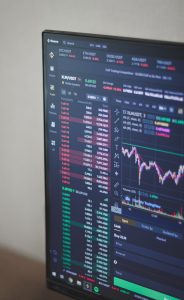Forex trading is a complex and dynamic market that requires a significant understanding of financial markets, trading psychology, and technical analysis. However, one area that is often overlooked is the role that physics plays in forex trading. Physics principles can be applied to forex trading to help traders better understand the market and make more informed decisions. In this article, we will discuss how to apply physics to forex trading.
Understanding the market as a system
The first step in applying physics to forex trading is to view the market as a system. Physics is all about understanding how systems work and how they interact with one another. In the context of forex trading, the market can be seen as a complex system of buyers and sellers, with the price of each currency pair being determined by the forces of supply and demand.
One fundamental principle of physics is that every action has an equal and opposite reaction. This principle can be applied to forex trading, where changes in the market can often be traced back to an underlying cause. By understanding the underlying causes of market movements, traders can better predict future price movements and make more informed trading decisions.
Using technical analysis
Technical analysis is a popular method used by forex traders to analyze market data and identify trading opportunities. Technical analysis relies on the use of charts and indicators to identify trends, support and resistance levels, and other important information. Many of the principles used in technical analysis are based on physics principles, such as the law of gravity and the concept of momentum.
For example, the concept of momentum is a key component of technical analysis. Momentum is the measure of the speed at which prices are moving in a particular direction. According to the laws of physics, an object in motion tends to stay in motion unless acted upon by an external force. In the context of forex trading, this means that if a currency pair is trending in a particular direction, it is likely to continue in that direction until an external force, such as a change in economic conditions or a major news event, causes a shift in market sentiment.
Applying risk management principles
Risk management is an essential component of successful forex trading. Physics principles can be applied to help traders better understand and manage risk. For example, the concept of leverage, which is a common feature of forex trading, can be understood using physics principles.
Leverage is the ability to control a large amount of money with a relatively small deposit. The use of leverage can increase the potential for profits, but it also increases the potential for losses. The principle of leverage is similar to the concept of mechanical advantage in physics, which refers to the ability to use a smaller force to move a larger object. In the context of forex trading, leverage allows traders to control larger positions with a smaller amount of capital. However, just as with mechanical advantage, greater leverage also increases the potential for losses.
Conclusion
In conclusion, physics principles can be applied to forex trading to help traders better understand the market and make more informed trading decisions. By viewing the market as a system, using technical analysis, and applying risk management principles, traders can gain a deeper understanding of the market and increase their chances of success. While forex trading is a complex and dynamic market, the principles of physics can provide valuable insights and help traders navigate this challenging environment.






